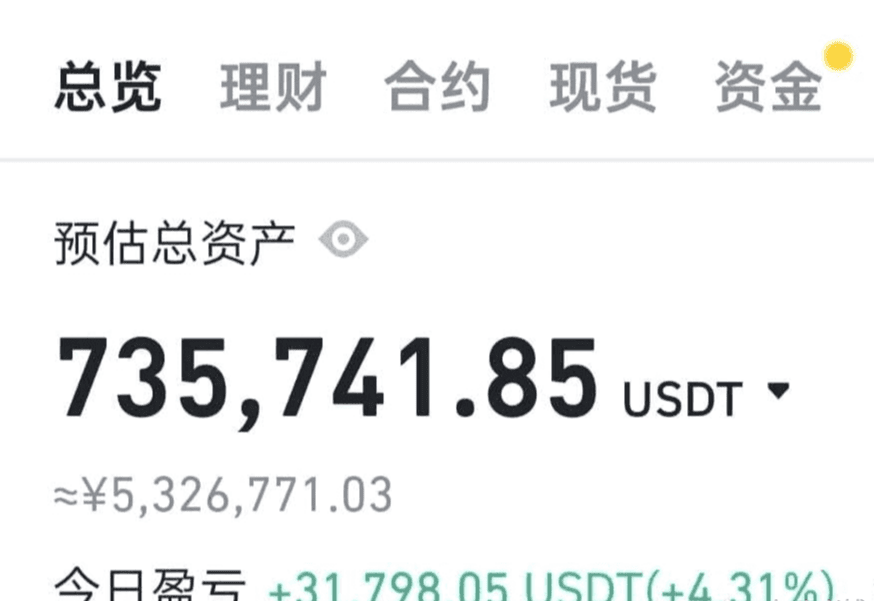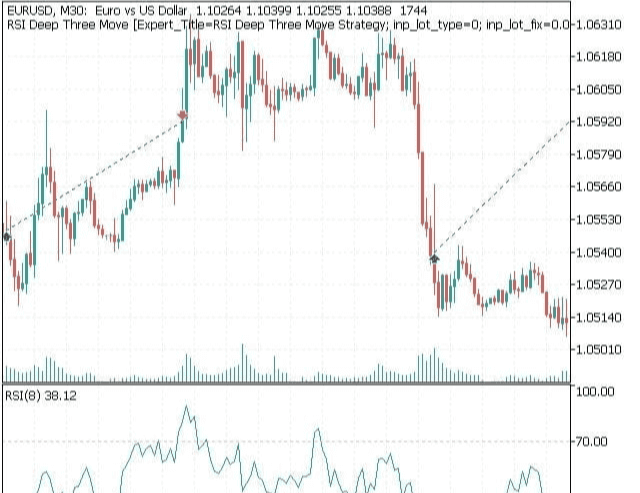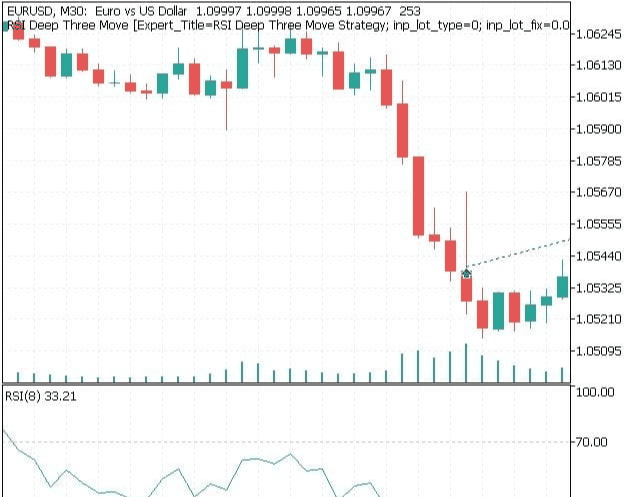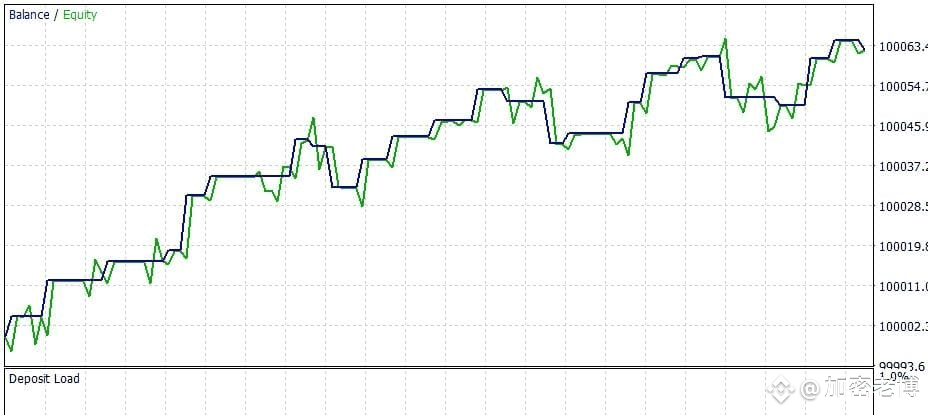What really changed my destiny was one day 4 years ago! Since then, I have taken back all that I lost!
At that time, I sorted out all the transaction lists and looked at them carefully many times. I felt very complicated. I was very impressed. There were more than 1,000 transaction records in total, of which nearly 700 were losses and only 300 were profits. Overall, the losses were greater than the profits, and more than 200 were large losses, so the overall loss in those years was huge. In fact, there is a big problem when you look at this transaction record. The first reaction is greed. When you see those big losses, you will recall the situation at the time. You are unwilling to take profits, and you are unwilling to stop losses. This is basically the reason for the big losses in the end.

There were also some small losses, mostly because the current thinking was not clear, there was no certainty, and I operated with luck. The research was not deep enough, and I entered the market blindly. After many times, the losses added up a lot. In the final analysis, the entry point was not clear enough, or not firm enough. After summarizing, I realized that the real good entry point should be the starting point of the stock price increase. Some unclear entry points were made when the price was fluctuating in a range, when the situation was unclear, which caused the number of small losses to increase, turning into a slow boiling frog, and it was too late when I remembered it.
Later, I summarized, reflected, listed problems, and thought a lot. I really put all my thoughts into it. Later, I carefully researched the technology and dry goods and summarized my own method, which is now easy to use!
I will also share it with my fans today. I hope it will be helpful to you. If you find it useful, remember to like and save it!
Because I've been rained on, I want to hold an umbrella for everyone, my inner thoughts
 I once lost 80% and doubted my life, but I didn't give up. I fell and got back up, constantly summarizing my experience. Now I can support my family by trading cryptocurrencies. Today I will share 5 golden rules and 3 market suggestions. Although the content is short, it is very valuable. Remember to collect and save it.
I once lost 80% and doubted my life, but I didn't give up. I fell and got back up, constantly summarizing my experience. Now I can support my family by trading cryptocurrencies. Today I will share 5 golden rules and 3 market suggestions. Although the content is short, it is very valuable. Remember to collect and save it.
Rule 1:
Invest small amounts and avoid going all-in. The shitcoin market is different from the mainstream market, and its high volatility determines that we should not "go all-in." Unlike traditional investments, the risk of a project going to zero here is extremely high, so investing small amounts is a rational choice. An important significance of investing small amounts is that even if there is a problem with the project, the loss can be controlled within an acceptable range. In the shitcoin market, it is especially important to keep enough "backup plans," which is not only the key to protecting the principal, but also a vigilance and respect for market risks.
Rule 2:
Act promptly and make decisive decisions. In the shitcoin market, opportunities often disappear in a flash. Too much hesitation can often cause you to miss potential high-yield projects. Decisive action is not blindly following, but is based on evaluating the project and keenly grasping market dynamics. Be responsible for your judgment in every choice, but act quickly after making a choice, so that you can seize the opportunity in an uncertain market environment.
Rule 3:
Double your profits and take out your principal, and gradually realize the remaining part. In the shitcoin market, it is crucial to set a good exit strategy and profit target. My consistent operating principle is to immediately withdraw the principal when the project doubles, so that even if the market fluctuates later, the profit part has already been locked in to avoid loss of the principal. In addition, if the project continues to rise, you can gradually ship and realize profits in batches. This method not only guarantees a certain profit, but also adapts to market uncertainties. The reason for setting the "double the principal" principle with DEXX is that in the shitcoin market, situations of project skyrocketing and plummeting are common. Once the project retraces, investors' principal and profits may be damaged, so it is a key means of controlling risk to withdraw the principal in time after the income reaches a certain target. It should be noted that not all projects need to be held for a long time, unless specifically marked, it is recommended to exit at the target profit in due course to ensure that the income is in your pocket.
Rule 4:
Diversify your investments to reduce overall risk. In the high-risk shitcoin market, diversification is an effective strategy to avoid concentrated risk. For example, if you are preparing to invest 500USDT/10SOL/1ETH, you may wish to diversify it into 10 projects and invest 50 dollars in each project. This way, even if one of the projects fails, it will not have a major impact on the overall funds, and the losses can be easily absorbed. Many projects in the shitcoin market have the risk of going to zero, so diversification is an important means of controlling overall risk. If you can choose projects in different industries and diversify into different types of cryptocurrencies, this method will further reduce the risk of failure of a single project. No matter how the market goes, diversification is always a wise choice to cope with market fluctuations.
Rule 5:
Be patient and don't rush for quick success. In the shitcoin market, not rushing for quick success is a crucial psychological quality. There are many opportunities in the crypto world, but not every day has suitable opportunities. Learn to wait and screen, and making prepared choices is much more stable than blindly following. Many investors lose their minds and always want to make quick profits, but may end up losing everything due to impatience. Opportunities in the shitcoin market are indeed not easy to capture, but as long as you wait patiently, you can always find suitable projects. Not rushing for quick success can maintain a clear investment mindset and avoid the "greed trap". You need to constantly remind yourself that there are many "myths" of ups and downs in the crypto world, and these are often illusions brought about by hype. Maintaining patience and calmness is the only way to success.
In addition to the above 5 rules, here are some tips for your reference. After a long period of market observation and summary, I have found that the following points are especially important to avoid everyone from falling into misunderstandings when operating.
1. Never buy the dip:
The characteristics of shitcoin market projects determine that we should not easily buy the dip, especially those projects that have experienced a significant rise. Once they fall, they often go straight to zero. Stay sensitive to trends and never buy the dip easily just because the price is low, as this will bring additional risk.
2. Familiarize yourself with the operation process:
Before conducting market operations, it is recommended that every investor first familiarize themselves with the process and never blindly follow the trend. Especially for internal盘 operations, due to their particularity, more caution is needed.
3. Pay close attention to market dynamics:
Always pay attention to market changes and withdraw the principal at the right time. You can use the "double the principal" setting of some trading platforms to ensure the safety of the principal. The stories of "diamond hands" getting rich that circulate in the market are often just manipulations by the banker, so don't be superstitious. In reality, the banker often adjusts the strategy according to the behavior of retail investors, so investors need to be vigilant at all times and not be easily confused by the story of "earn 1 million with 100 yuan."
Operating ideas and discipline. Every investor has their own unique operating ideas, but if you choose to join our team, please be sure to operate according to the ideas I recommend. These five rules are the summary of experience tested by the market, which can help everyone move forward more steadily in the shitcoin market. In the end, market operations require strict discipline and adherence to rules, rather than being swayed by emotions. The correct operating ideas and firm execution are the keys to success.
Personally tested method: My cryptocurrency trading method is very simple and practical. I used only one year to trade up to 8 figures. I only do one form and enter the market when I see the opportunity. I don’t place orders without a form. I have maintained a winning rate of over 90% for five years!
Several commonly used technical indicators
1. Overview
This article is based on a series of new studies that showcase some RSI-based
trading techniques. A trading technique is a way to use indicators. This research is based on the mql5 coding language.
2. Introduction to RSI
RSI stands for Relative Strength Index, which is a technical analysis indicator used to measure the strength and momentum of a security, such as a stock, currency, or commodity. The RSI is calculated using a mathematical formula and is plotted on a chart to provide a visual representation of the strength or weakness of a security over a given period.
The RSI is based on the principle that a security becomes overbought as prices rise and oversold as prices fall. The RSI helps traders identify potential trend reversals or price corrections.
RSI calculations involve comparing a security's average gains over a given period of time with the security's average losses over the same period. The default version of the RSI is plotted on a range of 0 to 100, with readings above 70 considered overbought and readings below 30 considered oversold. The RSI is a popular indicator among traders because it can provide early warning signals of potential market trends. For example, if a security's RSI is consistently rising and reaching levels above 70, it may indicate that the security is overbought and should be adjusted. On the other hand, if the RSI is consistently falling and reaching levels below 30, it may indicate that the security is oversold and will rebound.
It is worth noting that the RSI should not be used alone as the sole basis for making trading decisions. Traders often use the RSI in conjunction with other technical analysis tools and market indicators to gain a more comprehensive understanding of market conditions and make informed trading decisions. Generally, the RSI is calculated with a period of 14.
3. What is RSI (a deeper description).
3.1 Overview
The Relative Strength Index (RSI) is a technical indicator used in the analysis of financial markets. It is intended to chart the current and historical strength or weakness of a stock or market based on the closing prices of a recent trading period. The indicator should not be confused with relative strength.
The RSI is classified as a momentum oscillator
, used to measure the speed and magnitude of price fluctuations. Momentum refers to the speed at which prices rise or fall. The relative strength RS is given by the ratio of higher closing prices to lower closing prices. Specifically, it calculates two averages of the absolute value of closing price changes, i.e., two sums of candle sizes in a candlestick chart. The RSI calculates momentum as the ratio of higher closing prices to total closing prices: stocks with more or stronger positive changes have a higher RSI than stocks with more or stronger negative changes.
The RSI is most often used for a 14-day period, with a scale range from 0 to 100, with high and low levels marked as 70 and 30, respectively. Shorter or longer time frames are applied to shorter or longer outlooks. High and low levels—80 and 20, or 90 and 10—occur less frequently, but indicate stronger momentum.
The Relative Strength Index was developed by J. Welles Wilder and published in his 1978 book (New Concepts in Technical Trading Systems) and in the June 1978 issue of (Commodities) magazine (now (Modern Trader) magazine). It has become one of the most popular oscillating indices.
The RSI provides signals telling investors to buy when a security or currency is oversold and to sell when it is overbought.
Marek and Šedivá (2017) tested the RSI with recommended parameters and its daily optimization and compared it with other strategies. The test was random in time and companies (e.g., Apple, ExxonMobil, IBM, Microsoft) and showed that the RSI can still produce good results; however, over a longer time frame, it is often beaten by simple buy and hold strategies.
3.2 Explanation
3.2.1 Basic configuration
The RSI is displayed on a chart above or below the price chart. The indicator has an upper line, typically at 70, a lower line at 30, and a dashed midline at 50. Wilder recommends a smoothing period of 14 (see exponential smoothing, i.e., α=1/14 or N=14).

3.2.2. Principles
Wilder believed that when prices rise rapidly, they will be considered overbought to some extent. Similarly, when prices fall rapidly, they will be considered oversold at some point. In either case, Wilder believed that a reaction or reversal was imminent.
The level of the RSI is a measure of the recent trading strength of a stock. The slope of the RSI is proportional to the rate of change in a trend. The distance the RSI travels is proportional to the magnitude of the move.
Wilder believed that tops and bottoms are indicated when the RSI is above 70 or falls below 30. Traditionally, RSI readings greater than the 70 level are considered to be in overbought territory, and RSI readings below the 30 level are considered to be in oversold territory. Levels between 30 and 70 are considered to be neutral, while the 50 level is an indication of no trend.
3.2.3. Divergence
Wilder further argued that the difference between the RSI and price action is a very strong indication that a market turning point is imminent. A bearish divergence occurs when the price makes a new high, but the RSI makes a lower high and is unable to confirm it. A bullish divergence occurs when the price makes a new low, but the RSI makes a higher low.
3.2.4. Overbought and Oversold Conditions
Wilder believed that "failure swings" in the RSI above 50 and below 50 were strong indications of market reversals. For example, suppose the RSI reaches 76, falls back to 72, and then rises to 77. If it falls below 72, Wilder would consider this a "failure swing" above 70.
Finally, Wilder wrote that it is sometimes easier to see chart formations and support and resistance areas on the RSI chart than on the price chart. The centerline of the Relative Strength Index is 50, which is often considered a support and resistance line for the indicator.
If the Relative Strength Index is below 50, it generally means that the stock's losses are greater than its gains. When the Relative Strength Index is above 50, it generally means that gains are greater than losses.
3.2.5. Uptrends and Downtrends
In addition to
Wilder's original theory on RSI interpretation, Andrew Cardwell also made some new interpretations of the RSI to help identify and confirm trends. First, Cardwell noticed that uptrends usually trade between RSI
40 and 80, while downtrends usually trade between 60 and 20. Cardwell observed that when a security changes from an uptrend to a downtrend, and vice versa, the RSI will experience a "range shift"
Next, Cardwell pointed out that bearish divergence
: 1) only occurs in an uptrend, 2) mostly only leads to a brief correction, not a reversal of the trend. Therefore, bearish divergence is a signal to confirm an uptrend. Similarly, bullish divergence
is a signal to confirm a downtrend.
3.2.6. Reversal
Finally, Cardwell found positive reversals and negative reversals in the RSI. Reversals are the opposite of divergences. For example, a positive reversal occurs when an uptrend price correction results in a lower low compared to the last price correction, while the RSI results in a lower low compared to the last correction. A negative reversal occurs when a downtrend bounce results in a lower high compared to the last downtrend bounce, but the RSI makes a higher high compared to the previous bounce.
In other words, although the highs or lows of the RSI show stronger momentum, the price cannot create higher highs or lower lows. This is evidence that the main trend is about to resume. Cardwell pointed out that positive reversals only occur in uptrends, and negative reversals only occur in downtrends, so their presence confirms the trend.
4. RSI Deep Three Steps
The deep three-step technique has an interesting hypothesis that states that a signal can be given whenever the RSI enters an oversold or overbought level and forms three consecutive deeper moves, and the fourth move is a confirmation (must also be deeper). The trading conditions are as follows:
A bullish signal is detected whenever the RSI is lower than the previous RSI, which in turn is lower than its previous RSI, and the latter is also lower than its previous RSI. Since it is usually used with an 8-period RSI, the RSI three periods ago must be lower than 20, and the RSI four periods ago must be higher than 20 (to avoid repeated signals).
A bearish signal is detected whenever the RSI is higher than the previous RSI, which in turn is higher than its previous RSI, and the latter is also higher than its previous RSI. Since it is usually used with an 8-period RSI, the RSI three periods ago must be higher than 80, and the RSI four periods ago must be lower than 80 (to avoid repeated signals).
A picture is worth a thousand words, the following picture shows a bullish signal based on this technique:

This code is used to copy numerical values from an indicator buffer to an array. The function takes five arguments: the handle of the indicator, the indicator buffer, the starting position in the buffer, the number of values to copy, and the array to store the values. It then checks if the array is dynamic, and if so, it resets the error code and copies the values from the buffer to the array. If the copy fails, it prints an error message and returns false. Otherwise, it returns true.
This code is used to calculate the lot size for a trade. The first function get_lot takes the trade price as a parameter and checks the lot calculation type (fixed or risk-based).
If the lot type is fixed, the normalize_lot function is called to normalize the lot size.
If the lot type is risk-based, the OrderCalcMargin function is used to calculate the margin required for the trade, and the AccountInfoDouble function is used to get the account balance.
The lot size is then calculated by dividing the account balance by the margin and multiplying by the risk percentage. The normalize_lot function is then called to normalize the lot size.
The normalize_lot function takes the lot size as a parameter, calculates the step size and minimum lot size of the trading variety, then rounds the lot size to the nearest step size, and applies the minimum lot size if necessary.
6. Results
From January 1, 2023 to the end of June, EURUSD 30-minute cycle, SL is 900 points (remember the RSI uses 8 periods).


7. Conclusion
Of course, not all techniques are perfect. You will definitely encounter some false signals, especially during trends. As you may have also noticed, in strong trends, this technique does not work as expected.
This strategy must be optimized to be applied to the market, but the idea is to propose a mean reversion way of thinking about market analysis.
These are the profit results of all trading varieties of my broker in a cent account, from 2023 to the end of June, with a time frame of 30 minutes.

Summary
I hope these 5 golden rules and 3 market suggestions can help you on your investment journey. Although the shitcoin market is full of opportunities, its high risks should not be ignored.
Only by being cautious, controlling risks, and strictly observing discipline can we move forward steadily in this highly volatile market and seize the right opportunities.
Let's work together to find our own opportunities in the crypto market, avoid risks, and jointly reap rich returns.
Mu Qing only does real trades, the team still has a place to get in the car quickly $BTC $ETH